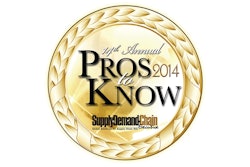Walk around a manufacturing C-Suite these days and you’re likely to hear talk of an “Assurance of Supply” initiative. As manufacturing processes become more distributed and supply chains are stretched globally, the big question is how to get reliable supply for all parts to ensure ultimate delivery to markets and customers. Companies are struggling to find processes that are efficient and repeatable, while being wary of carrying extra inventory. Margins will continue to get squeezed and keeping markets stocked will be a prime directive. Through all of these changes manufacturers are scored on customer satisfaction (revenue), inventory levels (working capital) and stock price. Undoubtedly, assuring supply is a key driver to achieving all of those metrics.
Everyone remembers the supply chain havoc that took place after the 2011 earthquake and tsunami in Japan. Automotive plants were hit the hardest, some shut down for months due to structural damage and inability to get materials in and out of Japan. Supply shortages also impacted plants in other areas of the world. After the unexpected global impact following the tsunami, the phrase “assurance of supply” might suggest finding alternate sources of supply during a natural disaster. After all, supply chain disruptions typically reduce share prices by an average of 7 percent according to a recent Accenture study. But where does that disruption risk typically come from? Not normally tsunamis, hurricanes or other natural disasters. In actuality, most supply disruptions are caused by everyday problems: late deliveries, suppliers unable to make production targets, raw material shortages or production quality problems. Just as manufacturers understand the processes in their own plants, they have to understand all the processes that their outsourced manufacturers and suppliers go through. Risk is introduced at each step and each process must be understood in order to reduce volatility. Manufacturers must collaborate with suppliers throughout each process in order to have a predictable outcome of supply.
Transparency of the supplier collaboration process is key to assuring supply. Companies tend to dabble in collaboration. Some have planning collaboration or order management solutions. Occasionally, companies have limited production visibility at the supplier or outsourced manufacturer’s site. But most companies fail to look at the full picture to assure supply goes undisrupted. Instead, multiple departments deal with different aspects of the supplier. Procurement negotiates the price, manufacturing material handlers place the order, logistics determines how to ship, supply chain tracks the shipment and finance determines when to pay. This fragmented approach to supplier management leads to haphazard reliability of supply. The status of each process is tracked separately and there is no way to look at the big picture, contextually. A holistic alignment with suppliers is needed across the corporation to ensure a seamless flow of high-quality goods to the right place at the right time.
Here are seven groups of questions manufacturers can ask themselves to assess their assurance of supply score:
- How early and often are you collaborating with suppliers? Are you sharing forecasts?
- How are you placing and managing your POs? Do you change quantities and deliveries after you have given your supplier a firm PO?
- Do you have true visibility into key events in the production lifecycle, into WIP (works in progress)?
- Do you have accurate information regarding vendor managed inventory, n-tier supplied component parts or even parts supplied as subcontract material?
- Do you have granular visibility into shipments to know exactly what is packed where and the exact date it will arrive? What about exact location as the shipment crosses borders or switches transportation modes?
- How are you handling invoices and settlements? Is handling supplier email and phone calls still part of the common workflow?
- Do your suppliers have access to capital? At what rates are they borrowing? Are they leveraging your credit strength to eliminate capital costs? Are you aware of your suppliers’ financial health?
Few people wear a big enough hat to address all of these questions. The key is breaking down barriers between departments and getting the finance, procurement and supply chain teams to see the big picture as it evolves every day. Avoiding disaster is just one problem. Eliminating the obstacles to an efficient and lean supply flow should be the objective.
How do manufacturers know they are at risk for supply assurance? Symptoms to look for when assessing assurance of supply issues:
- Too much or too little inventory
- Buffered lead times
- Have a supplier risk program
- Losing customers
- Pushing inventory responsibly to contract manufacturers or suppliers – not managing how warehouse is stocked
- New product introduction availability fears – questions surround how you will get supply
- Rigid supply – no flexibility for demand surges
- Have an offshoring payment processing facility
Everyone has an assurance of supply problem to some extent today due to the complexity of global sourcing. For years manufacturers were blessed with high margins but that is changing and margins are thin today. You can’t fill up your distribution centers with goods—not only is there a cost factor but the speed of business and consumer buying trends cause goods to quickly turn obsolete. Manufacturers have to be faster and more agile in the supply chain. Assurance of supply is essential to being able to compete. It also helps to be easier to do business with from the supplier’s perspective. The common thread in assurance of supply initiatives is partnering with suppliers by collaborating. Best in class companies seamlessly manage all aspects of a supplier relationship. The big opportunity is in using these relationships to the greatest advantage for everyone in the value network.
Snapshot
A high tech manufacturer was being hit by a string of supplier attrition. They wanted to find out why so they brought in an outside firm to investigate. Here’s what one representative supplier said:
Every day we get beat down on pricing by procurement, yet our manufacturing windows are not respected. Forecasts are inaccurate and the company is constantly changing orders inside the firm order time period. We had to hire a fulltime person to handle all the order dispatching calls. There is a four-hour call every day to review every single order. On top of all of this, we never get paid on time and don’t know the status of our invoices. Recently the finance team informed us that they are pushing out days payable to 90 days.
The manufacturer lost suppliers and put its supply at risk because it was not investing in the supplier relationship. It wasn’t looking at the big picture in the assurance of risk.

















